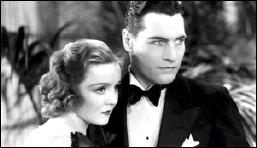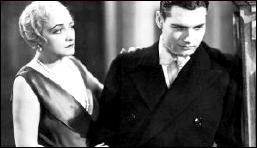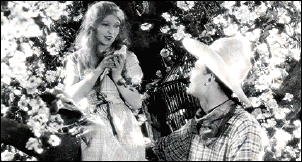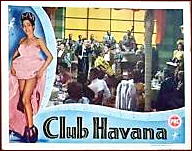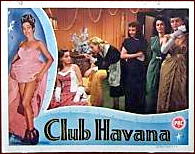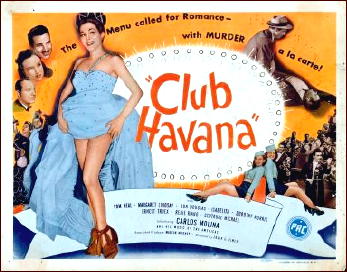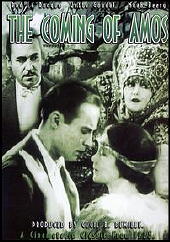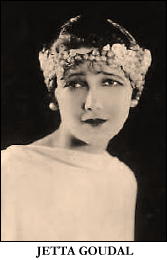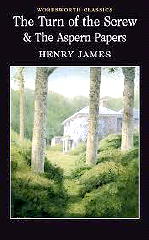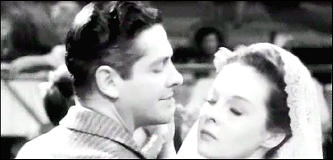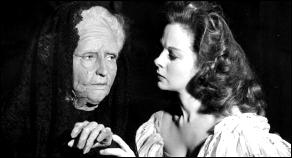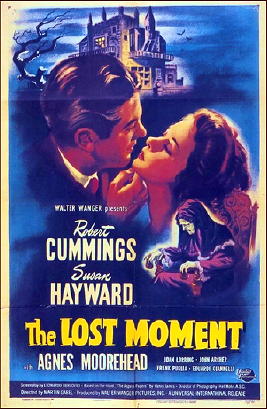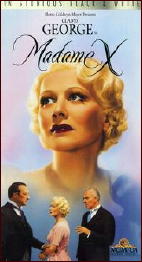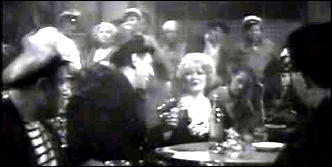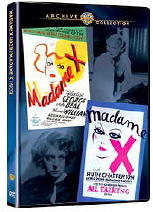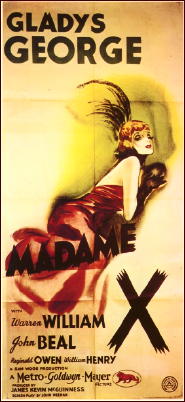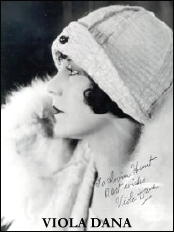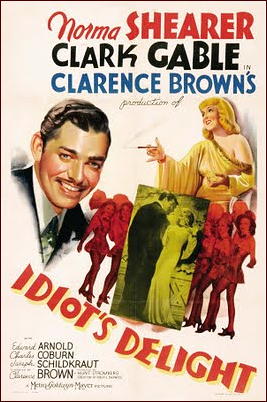IDIOT’S DELIGHT. MGM, 1939. Norma Shearer, Clark Gable, Edward Arnold, Charles Coburn, Joseph Schildkraut, Burgess Meredith, Laura Hope Crews, Harry Van’s “Les Blondes”: Virginia Grey, Virginia Dale, Paula Stone, Bernadene Hayes, Joan Marsh, Lorraine Krueger. Screenplay: Robert E. Sherwood, based on his own Pulitzer Prize winning play. Director: Clarence Brown.
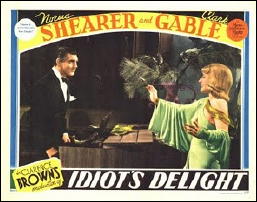
Not only was Robert Sherwood hired to write the screenplay, but he expanded on it by creating a long prelude to the play itself.
Some back story for both of the two stars is filled in, detailing their first encounter as vaudevillians Harry Van and Irene Fellara, whose paths cross and meet again some 20 years later, just as rumors of war are rumbling across Europe.
Clark Gable plays Harry Van, of course, and Norma Shearer is Irene. He’s a stooge for a phoney mind-reader when first they meet, and she’s an acrobat who hangs by her teeth in the act before them. They spend one wonderful night together (but not a bed) before their trains take them in opposite directions in the morning.
Harry Van: [at a train station] Well, we gotta be pulling out now babe.
Irene Fellara: I know, but not together.
Harry Van: No, not together. You go your way and I go mine. But I got a hunch we’ll see each other again. Sometime.
The next time they meet (and of course they do) is in a snowbound lodge somewhere in the Alps.
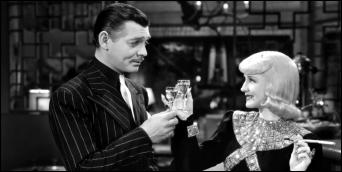
Unable to cross the border from one country to the next because of international tensions, a large number of passengers from a wide assortment of countries are also stranded.
Harry is now the manager and lead dancer for a troupe of female dancers (Les Blondes). She’s the mistress (we presume) of an important European munitions mogul. She’s also now a blonde and claims to be a refugee Russian countess. His jaw drops.
Irene Fellara: The temple of your memory must be so crowded.
Harry Van: Are you sure you’ve never been in Omaha, Madame?
In fine overdramatized fashion Irene goes into much detail about her former life:
Irene Fellara: And then … an American cruiser rescued me. May Heaven bless those good men!
Harry Van: Ahem. Excuse me Madame. But it seems to me that the last time you told me about your escape it was different.
Irene Fellara: Well! I made several escapes.
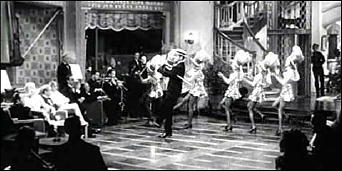
There is a lot of comedy in this film, and in fact it is quite remarkable – I wouldn’t have known it until reading about it later on IMDB – that this is the only time Clark Gable did a song and dance routine in a movie: “Puttin’ on the Ritz.”
He does it well – but then again everything Clark Gable did in a movie he did well. He was, as far as I am concerned, the quintessential Hollywood actor, with a presence before the cameras that was second to absolutely nobody else.
The movie is itself is a time capsule trapped in amber, as Idiot’s Delight is, and you have to watch this movie as if you were in the theater in 1939. It is in itself a plea for peace, not war; laying the blame for the incipient hostilities on munitions manufacturers, unfortunately, not the plans of national glory of Hitler and others. Hitler himself is not mentioned, I do not believe.
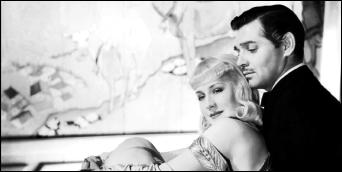
So there is a lot of anxiety hidden behind the long-delayed romance and the songs and quick and easy patter of Harry Van.
Lives are about to be disrupted for many and for good. A honeymooning couple are emblems of loves that are (most likely) going to be torn apart.
Many of the people who have left comments seem to feel that the film is outdated, which it is, and corny, which it is and is not, both at the same time. The movie is entertaining, no doubt about it, but watching it in the present day there is a sense of unease or disconnect between its several components, and all I can do is tell you about it. More than this, I haven’t defined it further, no more than I have.
There are two endings for this film. One is a happier one, shown in the US. The other, shown in Europe, which is the one I’ve just watched, ends on a bright note, but one wrapped up in a solid container of reality.
NOTE: Credit for the dialogue quoted goes to the IMDB website, from which I copied and pasted.
